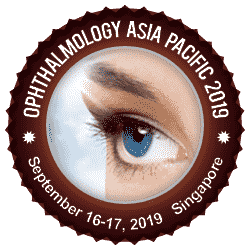Neebha Anand
Professor, Regional Institute Of Ophthalmology, PGIMS ,Rohtak, Haryana, India
Title: Limbus Sparing Limbal Incision ---A New Modified Conjunctival Incision Technique In Strabismus Surgery
Biography
Biography: Neebha Anand
Abstract
Aim: To introduce a newer technique of conjunctival incision called ‘Limbus Sparing Limbal Incision (LSLI)’ for horizontal rectus muscle strabismus surgeries. Methods: 20 patients were randomly divided into two groups of 10 each. In group 1, the conventional limbal incision was given in the conjunctiva and in group 2, a modified limbal incision, Limbus Sparing Limbal Incision (LSLI) was given. Each patient was followed post operatively on first post op day, 7th post op day and at the end of six weeks. Symptoms like pain, discharge, foreign body sensation, conjunctival congestion, excessive watering and lid swelling were noted. A record was also made of the conjunctival hyperaemia/chemosis, gaping in conjunctival incision, conjunctival retraction/coiling, thickened conjunctival flap, suture granuloma, corneal abrasion, dellen formation, other signs of ocular surface disorders, need for suture removal and need for resuturing. Results: The mean pain score in group 1 was 1.30 ± 0.68 a while it was 2.10 ± 0.57 in group 2 (p=0.010). Mean foreign body sensation score in group 1 was 1.10 ± 0.32, while it was more i.e. 2.30 ± 0.68 in group 2 (p<0.001). In 20% of patients in group 2, re-suturing of the wound had to be done. Dellen formation was seen in 10% of patients in group 1 and none in group 2 (p=1.0). Conclusion: Though, the new modified conj incision spares the damage to perilimbal tissue and stem cells ,hence saving stem cells for future , the post op discomfort and delayed healing limited its use. However, large scale studies are needed which can compare the two techniques in terms of outcomes, complication rates, and patient satisfaction.

